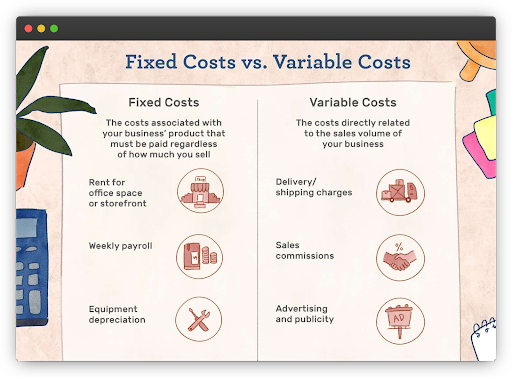If you fancy getting out of your 9-5 and launching a one-man graphic design agency right from your home, this article is precisely for you.
In this blog post, we lay down the only three key strategies required to help you do so.
Let’s jump right in!
Decide On Your Offering
Before you can make your phone ring with multiple Stripe notifications, you must decide on your offering for your design agency.
You’ve got two options:
Niching Down To A Specific Skill
Narrowing your focus to a specific design skill can help you establish yourself as an expert and attract clients seeking that specific expertise. This approach allows you to showcase your skills and build a strong portfolio in a particular niche — making it easier to market your services.
And here’s the kicker: focusing on a niche can help you differentiate yourself from competitors and potentially charge premium rates for your specialized services.
For example, you might choose to specialize in website design for growth-stage tech startups. By marketing yourself as the goto brand for the same and boldly rejecting work from anyone else, you can become known for delivering high-quality work in this category.
Offering A Wide Range Of Services Through White-Labeling
On the flip side, you can choose to offer everything under the sun in the design industry by white-labeling the work of other freelancers. This means you act as the intermediary between clients and freelancers — managing the projects while maintaining client relationships.
With this approach, you’ll need to find and establish a network of reliable freelancers with diverse skill sets to fulfill various kinds of client requests.
To price your services accordingly, you’ll need to consider factors such as the project(s) complexity, the expertise required, the time involved, and the market rates for similar services.
Also, remember to account for the fees you’ll pay to the freelancers whose work you white-label, as well as any additional costs related to project management, client communication, and marketing.
This path makes it challenging to establish a strong brand identity or compete against specialized agencies in the long run if your project and client management skills aren’t top-notch — because that’ll be your main moat.
Identify Your Expenses When Working Out Your Pricing
The next important step is to identify your expenses to help determine pricing to build a cash flow positive design agency.
When identifying your expenses:
- Determine whether you’ll use your own hosting space or opt for a third-party service. A graphic design agency is going to need a lot of cloud storage. So, you must consider factors like storage capacity, reliability, downtime (if any), and upfront or recurring cost(s).
- Assess the design software and tools you’ll need — like Adobe Photoshop, Figma, or other industry-standard applications. Plus, you need to factor in if you need to purchase licenses or subscribe to their monthly plans.
- Depending on your work style (remote or in-office or hybrid), you need to take into account the monthly rental of your co-working space, plus other important costs like internet service (if strictly working from your home office).
- Will you be an one-person operation, or will you be hiring team members? Will they be freelancers or on payroll? The costs, pros, and cons for each of these options are different, so pick an option that fits your requirements precisely.
- Ensuring you stay on top of the industry trends, allocate a monthly budget for workshops to attend, courses or conferences to widen your client network.
When evaluating costs, don’t make the mistake of viewing them in a one-dimensional fashion. Instead, categorize them into fixed costs and variable costs. This way you’ll upfront know about your financial flexibility either when upscaling or being frugal while building.

Source: The Balance Money
When pricing your services, you can either adopt the per-hour or per-project or monthly subscription (productized services) model.
To figure out your per-hour pricing:
- Determine your target monthly income.
- Add up the fixed and variable costs identified earlier.
- Estimate the average number of hours you realistically expect to work per month. Keep in mind factors like client management, administrative tasks, and professional development when determining the number of billable hours.
- Divide your total expenses by the average number of billable hours.
Per-project pricing is a lot easier to handle as your income isn’t dependent on the actual number of hours you invest in a project but your speed of getting the project to the finish line.
Make sure you regularly review and reassess your expenses and pricing as your business grows and evolves to never make a loss in any project.
Invest In Marketing Assets With Long-Term ROI
Now, it’s time for you to invest in marketing assets to promote your services and attract ideal clients.
To make that happen, you need to:
- Create a professional blog on your agency’s website where you can showcase your expertise, share design tips, industry insights, relevant content, and in return capture leads for your business.

Source: YouTube
This helps establish your credibility as a seasoned designer or a new designer in the market with a lot of talent, and can attract organic traffic to your website consistently.
- Build a visually appealing portfolio that showcases your best design work. Consider using platforms like Dribbble, Behance, or even your agency’s website to display a collection of your projects.
Regularly update your portfolio with new and high-quality work to demonstrate your skills and close potential clients without ever hopping on a discovery call.
- Create a compelling profile on popular freelancing platforms like Upwork, Freelancer, or Fiverr. Clearly outline your skills, experience, and portfolio to increase your chances of being hired by clients browsing these platforms.
These platforms are the usual starting points of most graphic design agencies. You might not hit your luck with a high-paying client, but could be a great way to get client testimonials.
- Establish a presence on social media platforms like Instagram, Twitter, LinkedIn, or Facebook — wherever your ideal clients hang out. Schedule your posts in advance to consistently share your design work, engage with the design community, and connect with potential clients.
- Craft well-designed and personalized cold email templates to reach out to potential clients directly. Highlight your expertise, showcase relevant work samples, and explain how your services can benefit their businesses. Tailor each email to the recipient and make sure to follow up strategically.
Don’t wait for high-ticket opportunities to land in your lap, instead grab them yourself.
- Invest in templates as they can be used for various purposes — like web design, social media posts, client presentations, and not just cold emails.
While originality plays a big part in the success of any campaign, using templates as a starting point helps you cut to the chase and build amazing projects in less time.
But note that although templates can speed up your workflow and help you deliver projects consistently on time, you should always try to craft unique and customized designs (with the help of templates) that meet the specific goals and preferences of your clients.
Wrapping Up
Productized service agencies are all the rage in 2023. With tools like Webflow, Stripe, and Figma, any graphic designer can convert their designing passion into not just a thriving but life-changing one-man business. Quickly executing the above-mentioned strategies, adapting them to your unique offering and circumstances, and just going ahead with it can help you launch a graphic design agency in less than a day, and that too from your home.